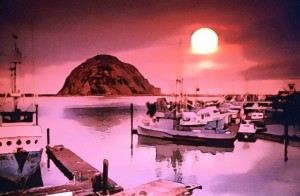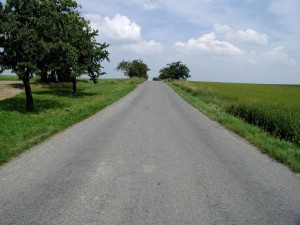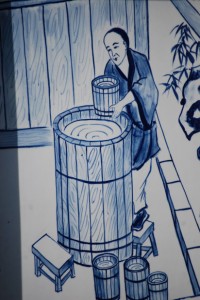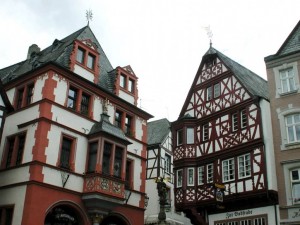Yes, I know Shakespeare wrote “All the world’s a stage,” but my point today has to do with the settings of stories. The “stage” or “world” or “milieu” of your story is its setting.
 The setting includes such things as the physical location, the time in history (including time of year and day), geography, culture, etc. It includes all aspects of the description of this backdrop for the characters–the effect on all senses, as well as the overall mood. Setting is, along with Character, Style, and Theme, one of the four fundamental components of fiction.
The setting includes such things as the physical location, the time in history (including time of year and day), geography, culture, etc. It includes all aspects of the description of this backdrop for the characters–the effect on all senses, as well as the overall mood. Setting is, along with Character, Style, and Theme, one of the four fundamental components of fiction.
In my view, Setting is less important to a story than Character, but it’s still vital. Your readers have a need to see the background, to imagine where the characters are, to visualize themselves in that venue along with the characters. Without a setting, a story would consist of characters talking and acting in a void, standing before a blank screen. (That would be interesting if done once, but tiresome if every story was like that.) Think of the very beginning of almost any movie, just after the opening credits. The audience is presented with a setting before the camera shifts to the film’s characters.
 So how does a writer go about the task of hammering her stage together? Keep in mind the primary sense for most readers is visual, so you’ll want to describe what a character sees, or would see if the character isn’t present yet. However, emphasizing other senses besides sight might be more appropriate if a particular character has a keen sense of hearing or smell and you’re trying to work in a little character description, too. Or if your main character is a dog, for example.
So how does a writer go about the task of hammering her stage together? Keep in mind the primary sense for most readers is visual, so you’ll want to describe what a character sees, or would see if the character isn’t present yet. However, emphasizing other senses besides sight might be more appropriate if a particular character has a keen sense of hearing or smell and you’re trying to work in a little character description, too. Or if your main character is a dog, for example.
It isn’t enough to provide a neutral, fact-based description of your story’s setting. This isn’t a news broadcast, so you should imbue your description with a mood or tone in keeping with the story, supporting its theme. Or you could describe it through the eyes of a character, thus giving the reader a sense of the character’s attitude toward the setting, and how it makes that character feel.
 You’re not writing for 19th Century readers, so you don’t get to go on for many adjective-loaded paragraphs describing the setting in pixel-by-pixel detail. Today you have to keep it brief, and be very selective about the details you choose. Your aim is to paint a few brushstrokes, as in classical Chinese art, and allow the reader’s imagination to fill in the rest of the world. One way to do this is to go ahead and describe the scene fully as an exercise (either writing the text or mind-mapping), with all the details, then cut back to a few essential aspects.
You’re not writing for 19th Century readers, so you don’t get to go on for many adjective-loaded paragraphs describing the setting in pixel-by-pixel detail. Today you have to keep it brief, and be very selective about the details you choose. Your aim is to paint a few brushstrokes, as in classical Chinese art, and allow the reader’s imagination to fill in the rest of the world. One way to do this is to go ahead and describe the scene fully as an exercise (either writing the text or mind-mapping), with all the details, then cut back to a few essential aspects.
You’ll want to place most of your setting description early in the scene, as an aid to your readers so they know where the characters are. But you can also intersperse brief snatches of setting description throughout the scene.
 The setting’s purpose in your story, then, is to form the backdrop against which the characters act. Don’t fall in love with your setting; stories are about the human condition, and your characters must be in the foreground. Your setting helps the reader place the characters in a context. It can also help you bring out the story’s theme, mood, plot, and even introduce some symbolism.
The setting’s purpose in your story, then, is to form the backdrop against which the characters act. Don’t fall in love with your setting; stories are about the human condition, and your characters must be in the foreground. Your setting helps the reader place the characters in a context. It can also help you bring out the story’s theme, mood, plot, and even introduce some symbolism.
As with all of my blog posts, I could be right or wrong about all of this. Leave a comment and let me know what you think. In this particular place and time, I’m–
Poseidon’s Scribe
